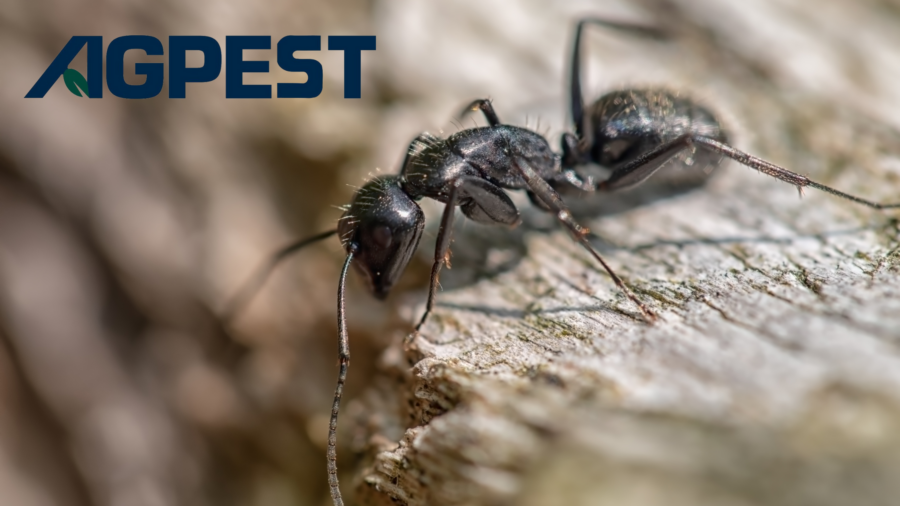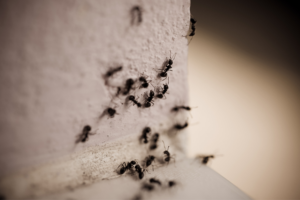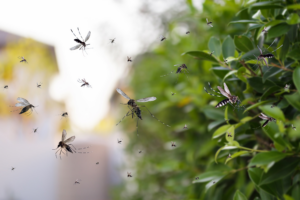When it comes to protecting your home from pests, recognizing the signs of a carpenter ant infestation is crucial. Carpenter ants, though often mistaken for termites, pose a significant threat to the structural integrity of your home. In this blog post, we’ll cover everything you need to know about carpenter ants, including how to identify them, differentiate them from termites, and take effective steps for ant control. If you’re dealing with a pest issue, don’t hesitate to request a free pest control quote from our professional team here in San Diego.
What are Carpenter Ants?
Carpenter ants are large, black or reddish-black ants that are known for their wood-boring habits. Unlike termites, carpenter ants do not eat wood but excavate it to create smooth, clean galleries for their nests. This behavior can cause substantial damage to wooden structures over time.
What Do Carpenter Ants Look Like?
Carpenter ants are among the largest ant species, typically ranging from 1/4 to 1/2 inch in length. They have a rounded thorax, a constricted waist, and elbowed antennae. The most common species found in San Diego is the black carpenter ant (Camponotus pennsylvanicus), but other species can vary in color, including shades of red or brown.
Carpenter Ant vs Termite: How to Tell the Difference
Carpenter ants and termites are often confused due to their wood-damaging habits, but there are key differences:
- Body Structure: Termites have straight, beaded antennae, while carpenter ants have elbowed antennae. Termites have a broad waist, whereas carpenter ants have a narrow, constricted waist.
- Wings: When winged, termite wings are of equal size and longer than their bodies. Carpenter ant wings are also longer than their bodies, but the front wings are larger than the hind wings.
- Wood Damage: Carpenter ants create smooth, clean galleries in wood, often with small piles of sawdust nearby. Termites eat wood, leaving behind rough, mud-lined tunnels.
Signs of a Carpenter Ant Infestation
Early detection is key to preventing extensive damage. Look out for these signs of a carpenter ant infestation:
- Sightings of Ants: Seeing large, black or reddish-black ants inside your home, especially in areas with wood, is a primary indicator.
- Sawdust Piles: Carpenter ants push out wood shavings and sawdust as they excavate their nests. Look for small piles of this material around baseboards, window sills, and other wooden structures.
- Rustling Noises: In quiet areas of your home, you might hear faint rustling sounds from within walls or woodwork, which can indicate ant activity.
- Hollow-Sounding Wood: Tap on wooden surfaces; if they sound hollow, it might be due to carpenter ant galleries inside.
- Discarded Wings: Winged carpenter ants (swarmers) will shed their wings after mating. Finding discarded wings around your home is a red flag.
How to Get Rid of Carpenter Ants
Effective carpenter ant control requires a multi-faceted approach:
- Identify and Remove the Nest: Locate the nest by following foraging ants or looking for signs of sawdust. Nests can be inside or outside your home. Professional pest control services are highly recommended for this step.
- Use Baits and Insecticides: Place ant baits near activity areas. Non-repellent insecticides can also be effective when applied to entry points and nesting sites.
- Eliminate Moisture: Carpenter ants are attracted to moisture. Fix leaks, improve ventilation, and ensure proper drainage to make your home less appealing.
Carpenter Ant Prevention Tips
Prevent future infestations with these tips:
- Seal Entry Points: Caulk cracks and gaps around doors, windows, and utility lines to prevent ants from entering your home.
- Keep Wood Dry: Ensure proper ventilation in attics, basements, and crawl spaces. Repair leaks promptly.
- Store Firewood Properly: Keep firewood and lumber away from your home’s foundation and elevate them off the ground.
- Trim Vegetation: Cut back trees and shrubs that touch your home to reduce access points for ants.
- Regular Inspections: Schedule regular pest inspections to catch any issues early.
Dealing with a carpenter ant infestation can be daunting, but you don’t have to face it alone. Our experienced pest control team in San Diego is here to help. Contact us today to request a free pest control quote and take the first step towards a pest-free home.



